It’s that phase of the season again when Chelsea’s predictable tactics have begun the five-time Premier League winners’ slide out of the very upper reaches of the league table. Whether under the supervision of a defensively minded manager like Mourinho or an attack-minded one like Sarri, the Blues eventually get riddled out by their opponents sooner or later.
The historic 6-0 defeat at Etihad Stadium is nothing but a repercussion of this repressed, predictable football Chelsea have been displaying. Against Guardiola’s men, they did not know how to cut through the spaces in defence, handing the competitive advantage of City who dominated the game with 56% possession. This tactical analysis explains where Chelsea were lacking in both attack and defence, and how Manchester City exploited the weak elements of Sarri’s men.
Lineups
Both teams played with their usual 4-3-3 formation. Chelsea’s front line was led by recent arrival Gonzalo Higuain while City’s was led by Sergio Aguero.
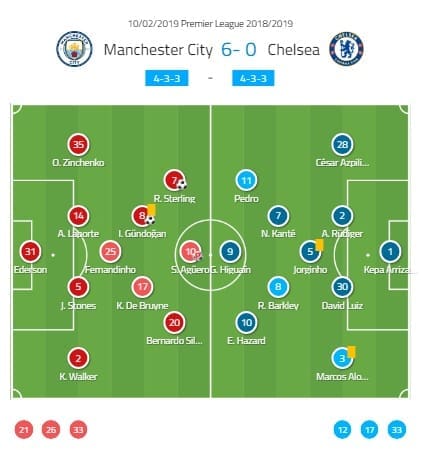
Chelsea lacked Sarriball coordination
Chelsea started the game with a high press. All their front players and midfielders rushed over City’s backline to disturb their build up from the back, while Chelsea’s backline stayed closer to City’s forward line. Chelsea’s plan seemed to be to force City to play long balls and then win the first or second ball.
Even though Chelsea did win possession from the first buildup run by City, they would soon get dispossessed as City’s press was no less aggressive. Not only did City press Chelsea high, but they also blocked all passing options for the away team.
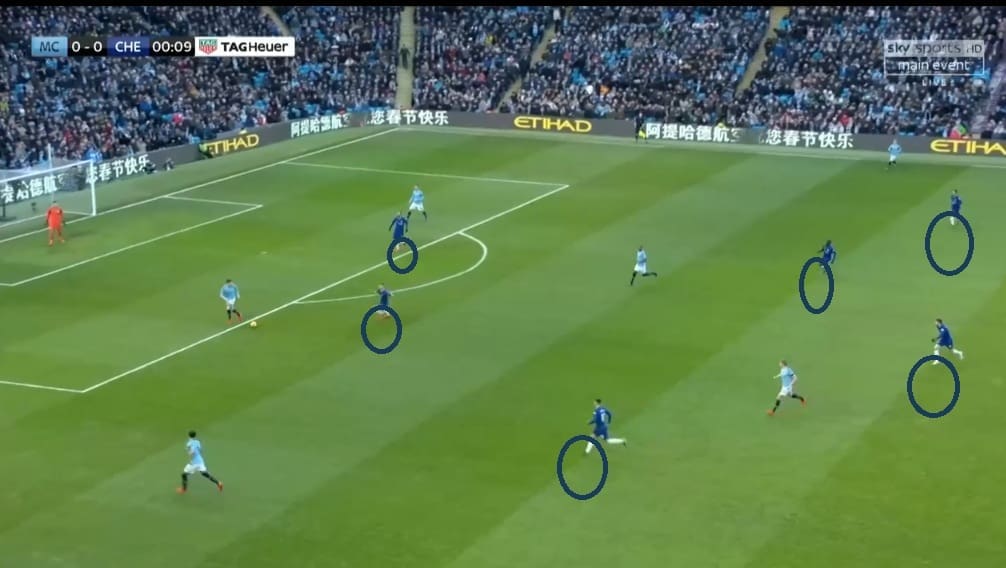
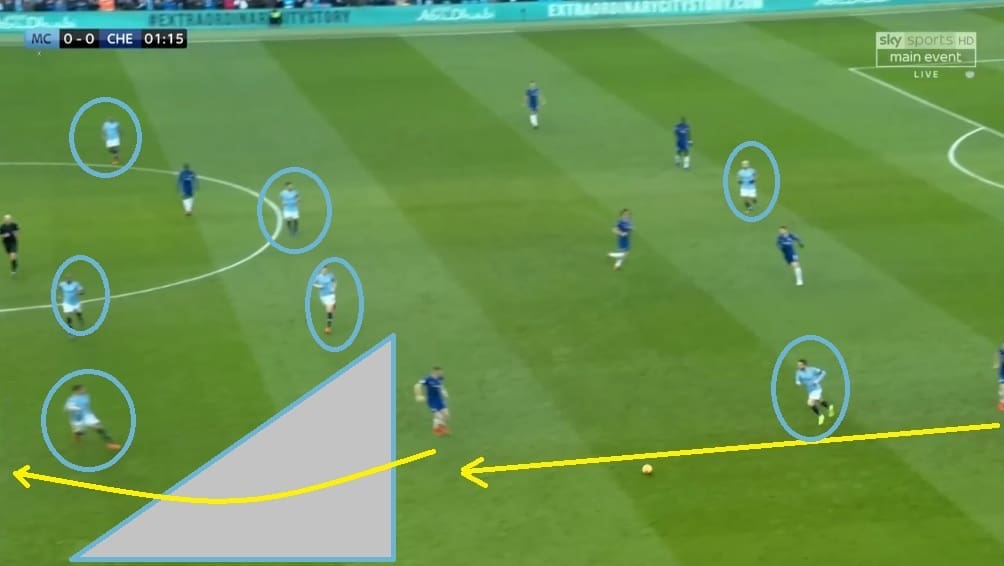
This intense press by City was what sank Chelsea right in the opening minutes of the game and onwards. The Blues showed a lack of coordination in their attacking scheme, especially in the opponents’ area. They effectively had two playmakers on the pitch, but both were restricted from having a meaningful effect in the final third.
In midfield, Jorginho was always marked, while David Luiz could only create plays exclusively from the defensive half of the pitch. Chelsea suffered a great deal due to the absence of an effective pass-maker in the final zones of the pitch.
What is appalling is as much as Chelsea were predictable for City, they looked to be naïvely disconnected from each other when in possession at the Etihad. In multiple instances they did not coordinate whom or where to pass to.
Due to this lack of coordination, Chelsea lost multiple opportunities to score. In one example Hazard’s brilliant run penetrated through the final third, but after the Belgian’s pass to Higuain the striker was slow to find a position to finish which resulted in the loss of possession.
Ideally, someone from Chelsea’s right side (Pedro or Kante) should have bumped up towards the box to link up with Higuain instead of relying on him to finish under such a heavy press. Pedro remained on the flank to provide width, while Kante waited just outside the box ready to channel the ball back in case the attack was cleared.
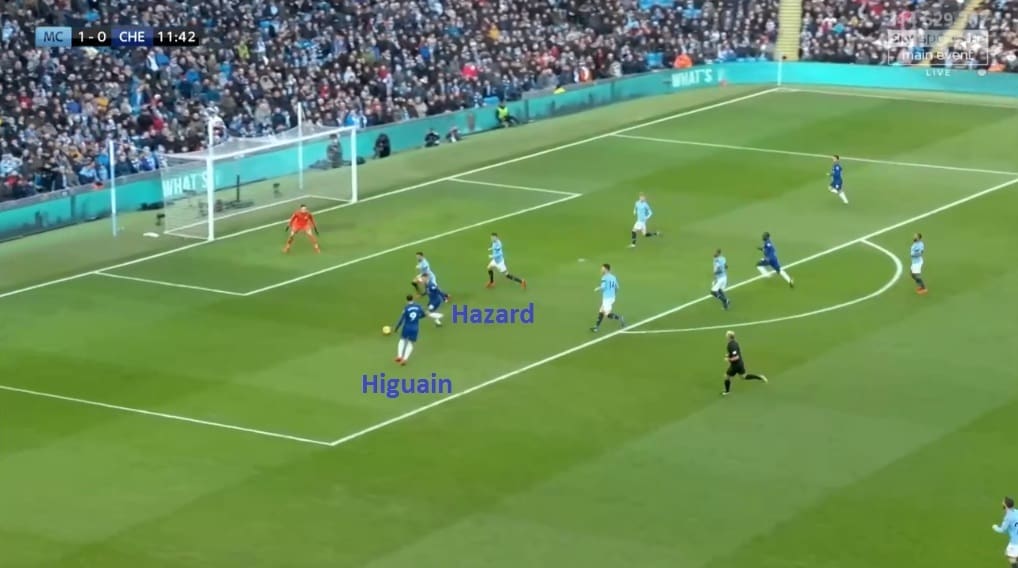
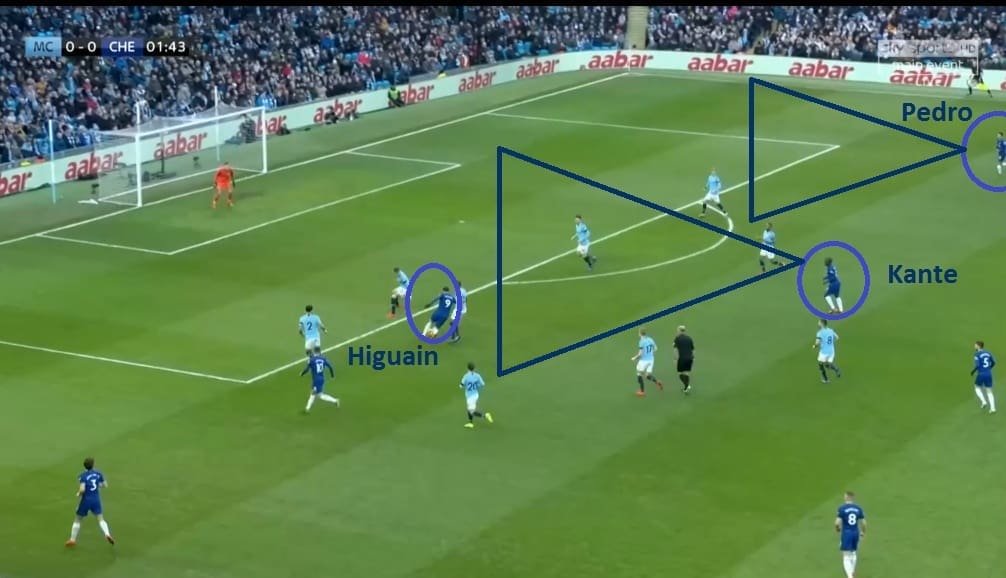
In another instance, Luiz sent a brilliant through-ball to Hazard. Since Higuain again didn’t have enough time or space to distract the defence though, Hazard couldn’t connect with him. Hazard’s prolonged hold-up play gave time for the defenders to read his moves and mark accordingly. This would again have been an excellent opportunity for Chelsea to score but it was lost due to a lack of attacking coordination.
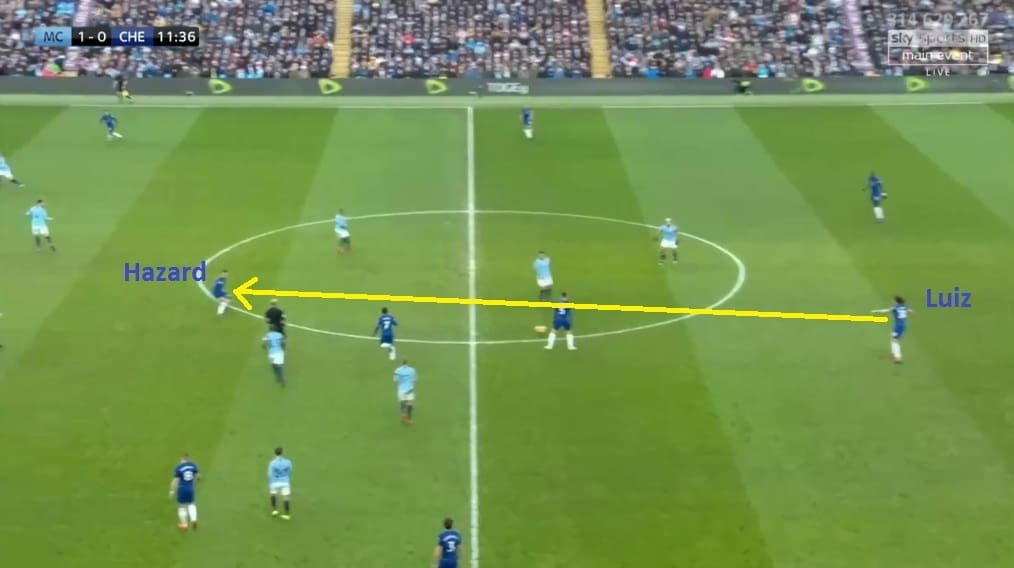
Is it Sarriball if the offensive patterns in midfield or behind are negated when the play reaches the goal area? Chelsea could hardly play Sarriball at the Etihad. They have not been playing Sarriball either this season under Sarri. The presence of a pure striker to lead the front line cannot completely solve the problem if the striker’s dialogue with the midfield is at a minimum. Against City, there were only three instances when Higuain could create a connection with Chelsea’s midfield. This shows Chelsea definitely lack Sarriball coordination; they are just faking it.
City’s tactical flexibility and goal quality
The Citizens played with a dynamic tactical strategy. As part of their plan, the wingers are to stay as wide as possible before cutting in to exploit and invade the half-spaces. The first goal scored by City is an example of how their wingers (Silva and Sterling) cut in deep from width to burst past Chelsea’s defenders. Not only the near winger but the far winger too would also join the action side.
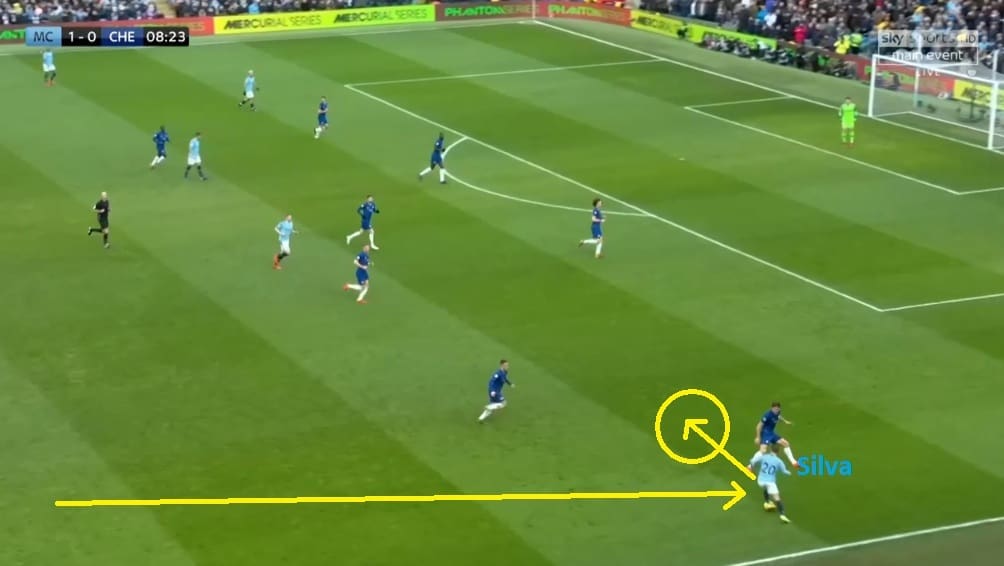
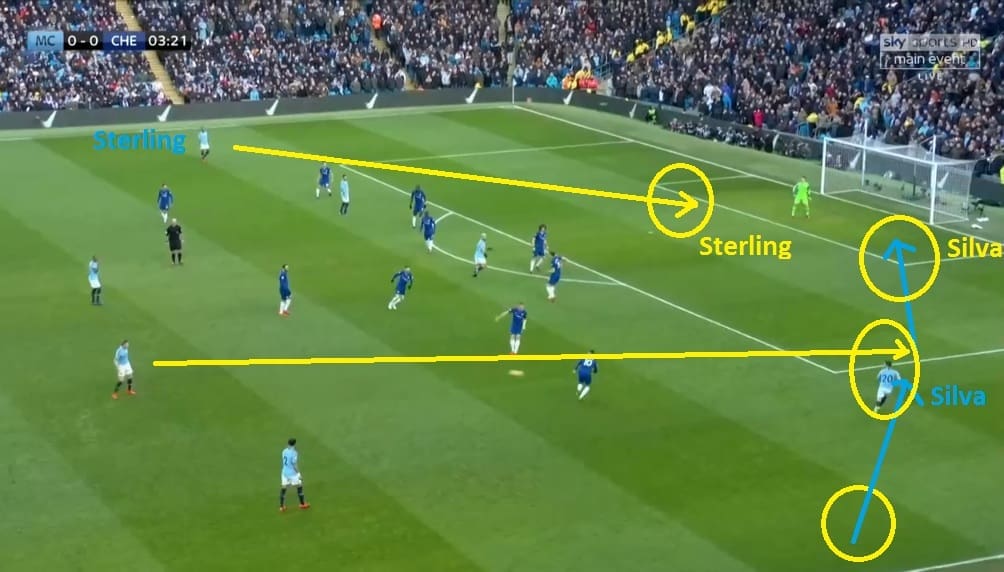
City’s wide play is executed in a very flexible manner. If their opponents play wide, City uses half spaces even if it requires the far-side winger to join in. If their opponents cut in, City’s wingers and full-backs use the flanks to attack. In either way, the Citizens are flexible enough to cut past the opponents either along the width or through half-spaces.
Not only the wider lanes and half-spaces, City always also have an eye on the pockets across the deep horizontal lanes. Against Chelsea, City players dropped into the areas between Chelsea’s lines which gave the home team the key to cross Chelsea’s defensive lines.
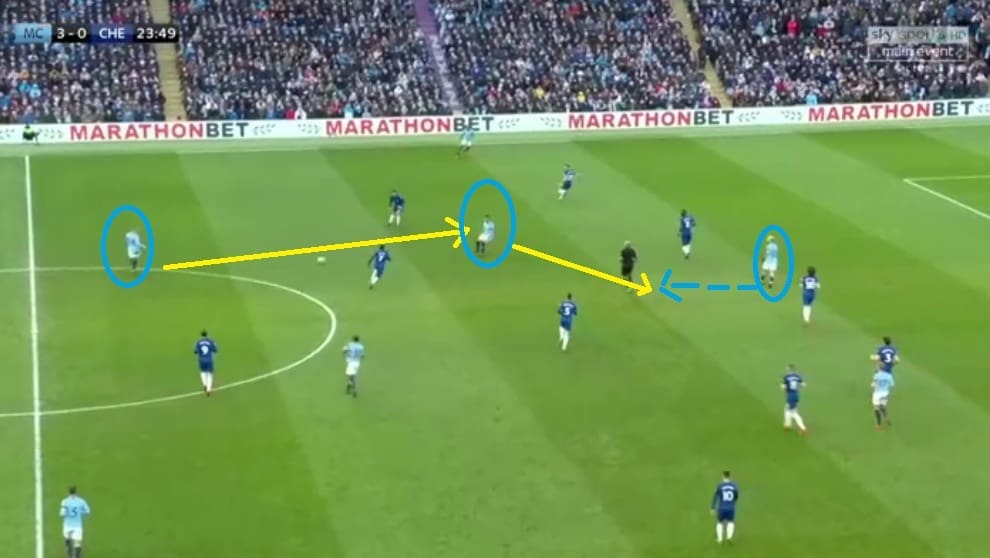
Other than exploiting the spaces, City also outperformed Chelsea with their long shots and passes from outside the box which would bypass Chelsea’s last line. City scored quality goals from these long-distance shots and assists.
Chelsea lacked defensive command
Throughout the season, Sarri has been questioned on Chelsea’s defensive weakness. Conceding as many as six goals in a single match speaks a lot about Chelsea’s defensive vulnerability. Amidst City’s tactical flexibility which uses wings and half-spaces in a threatening way, Chelsea’s defensive orientation would have to be lost.
The active contribution of the far-side winger outnumbered Chelsea, and the Blues were severely exposed. Chelsea’s defence was unaware of this offensive flexibility and unexpected movement of their opponents. The following images explain how Chelsea’s defensive ignorance caused them to concede.
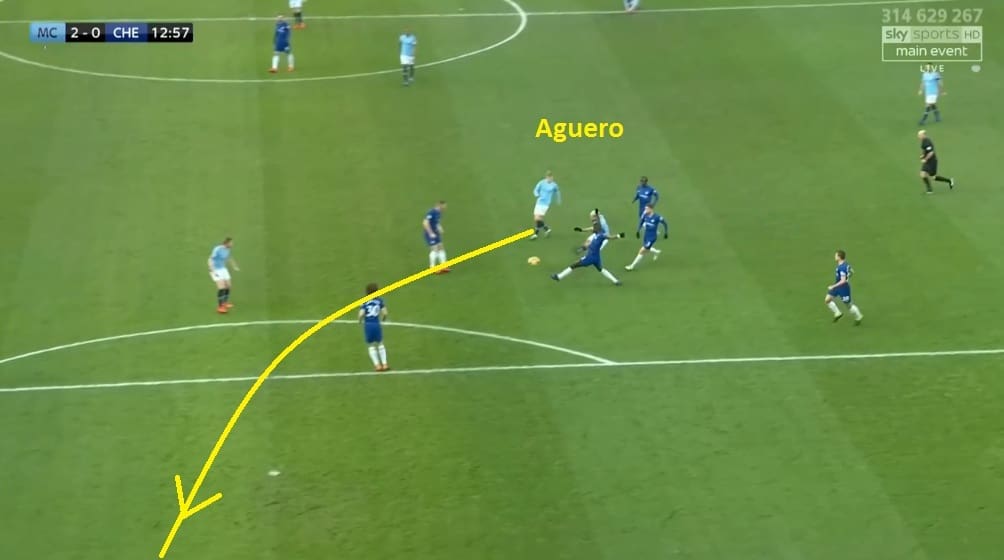
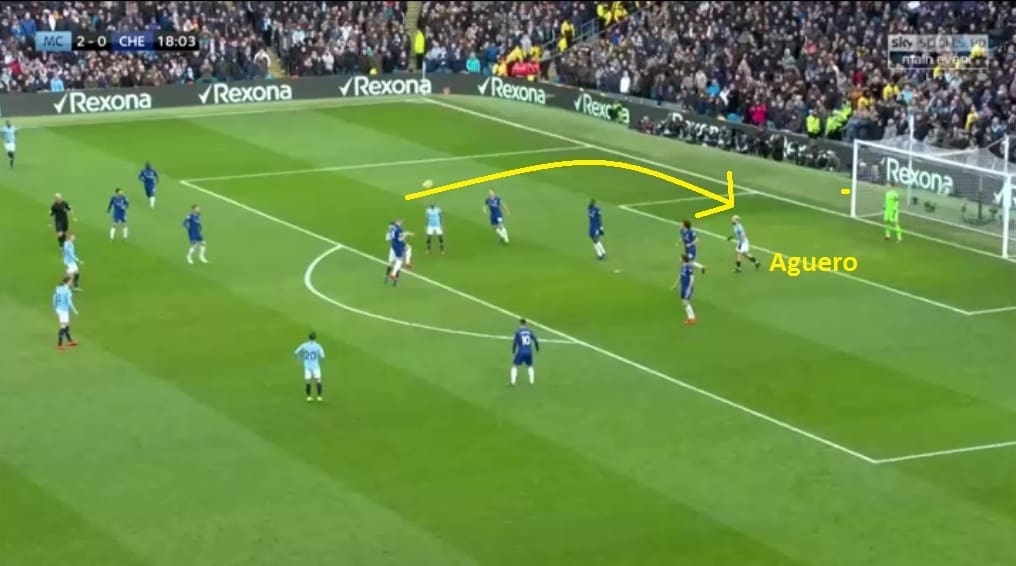
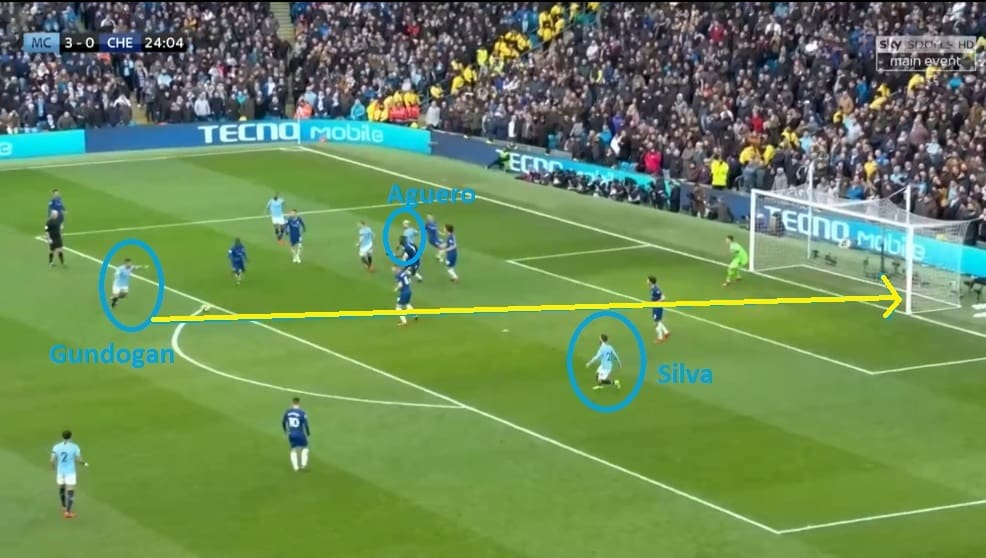
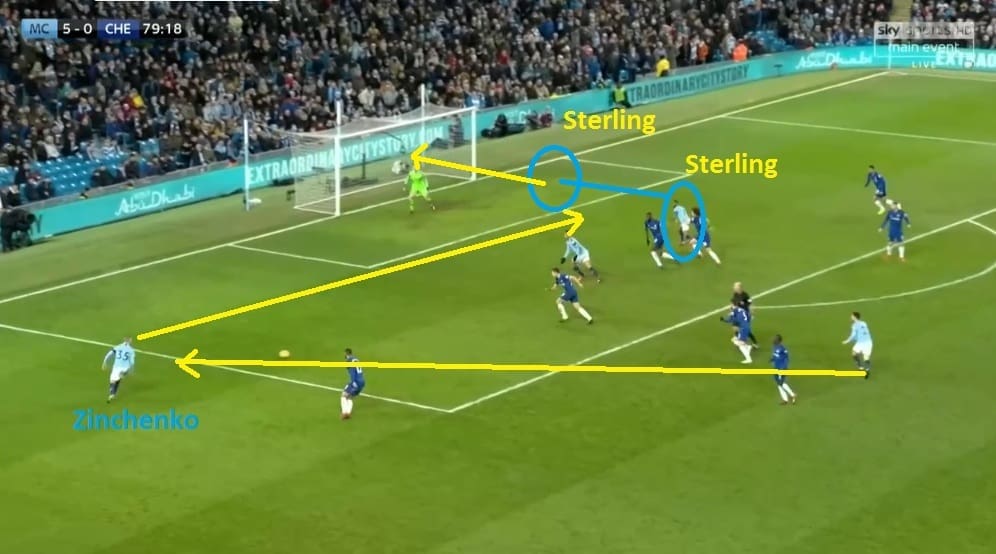
In the second half, Chelsea reduced the gap between the lines but this created space behind the last line. Their defenders also became more vigilant individually in the penalty area.
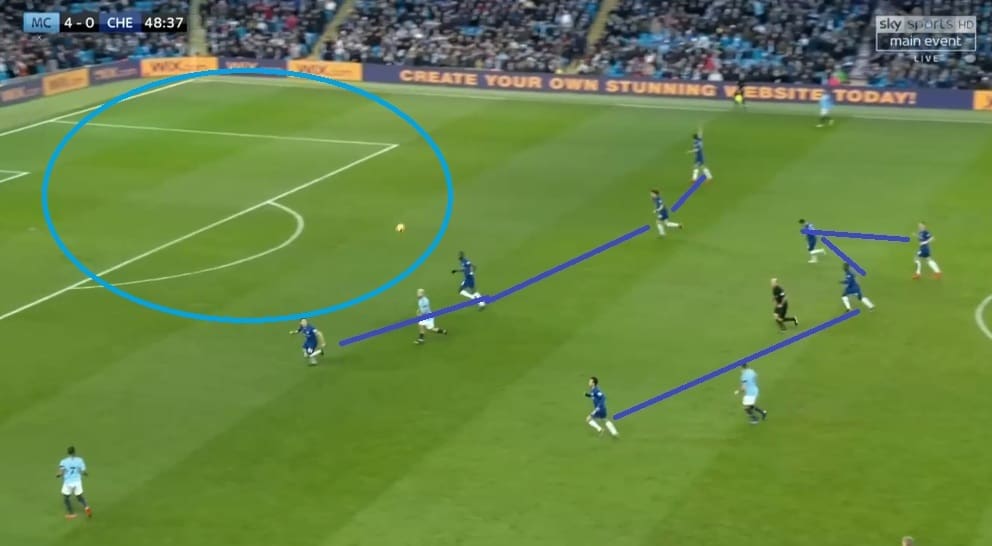
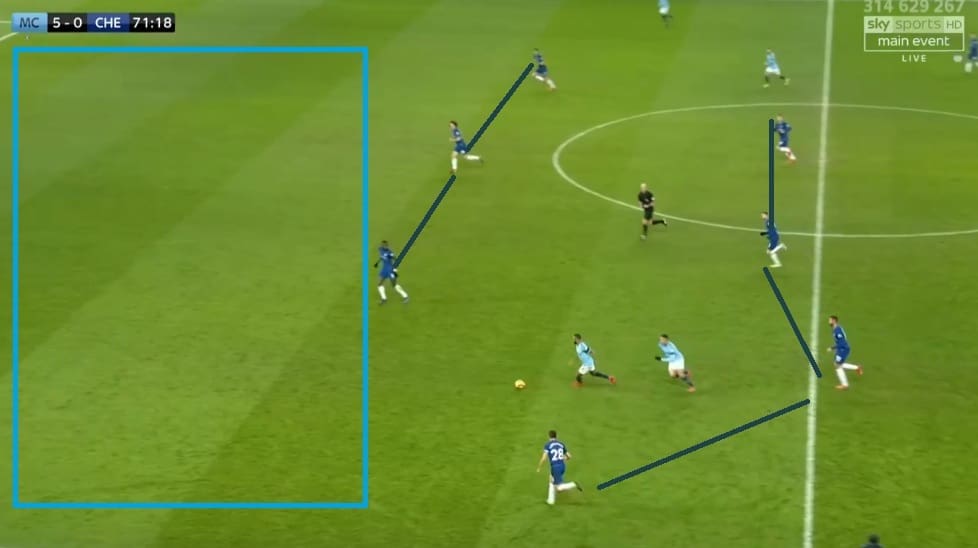
However, they still lacked the technicality in individual defending. Particularly, Azpilicueta was too aggressive in one instance as he gave away a penalty. Offensively, reducing the gap between the lines diluted Chelsea’s presence in the final third during the attacking phases, further reducing their chances to score while they continued to be dominated by City’s intimidating attack.
Chelsea’s defence simply lacked the kind of dynamism needed to resist an attacking force like the Citizens. They seem to lack both technique and tactics to defend smartly. With this sixth loss of the Premier League, it’s become more evident that Chelsea’s defensive vulnerability and negligence is due to lack of defensive command from the last line.
As soon as they enter the defensive phase or are transitioning to it, the Blues neither follow a coordinated individual marking scheme nor form a compact zone to protect their area. This is due to a lack of defensive command from the centre-backs or obedience towards clearly defined defensive roles they are supposed to be capable of following.
Conclusion
A key lesson learnt from not only Chelsea’s defeat at Etihad but also their recent form is that the Blues are currently in transition from being a defensive-minded team to an attack-minded one. Such a transition will take its time. Until then it will remain comfortable for opponents, like City, to shatter a team which does not know how to defend in matches when all their tactical energy is being consumed by trying to initiate Sarriball-esque attacks. Chelsea are still faking Sarriball instead of adopting it purely.
Until then, Sarri needs to put his mind to defining clear roles for his players, especially when it comes to blocking opponents’ passing options in defensive phases. Not only that, he must instill a strong defensive command in Chelsea’s back-line. If he really wants to adopt an attacking approach for the Blues, he needs to do his homework when it comes to backstage preparation and strengthen the Blues’ defensive capacity.
If you love tactical analysis, then you’ll love the digital magazines from totalfootballanalysis.com – a guaranteed 100+ pages of pure tactical analysis covering topics from the Premier League, Serie A, La Liga, Bundesliga and many, many more. Pre-order your copy of the February issue for just ₤4.99 here, or even better sign up for a ₤50 annual membership (12 monthly issues plus the annual review) right here.





Comments